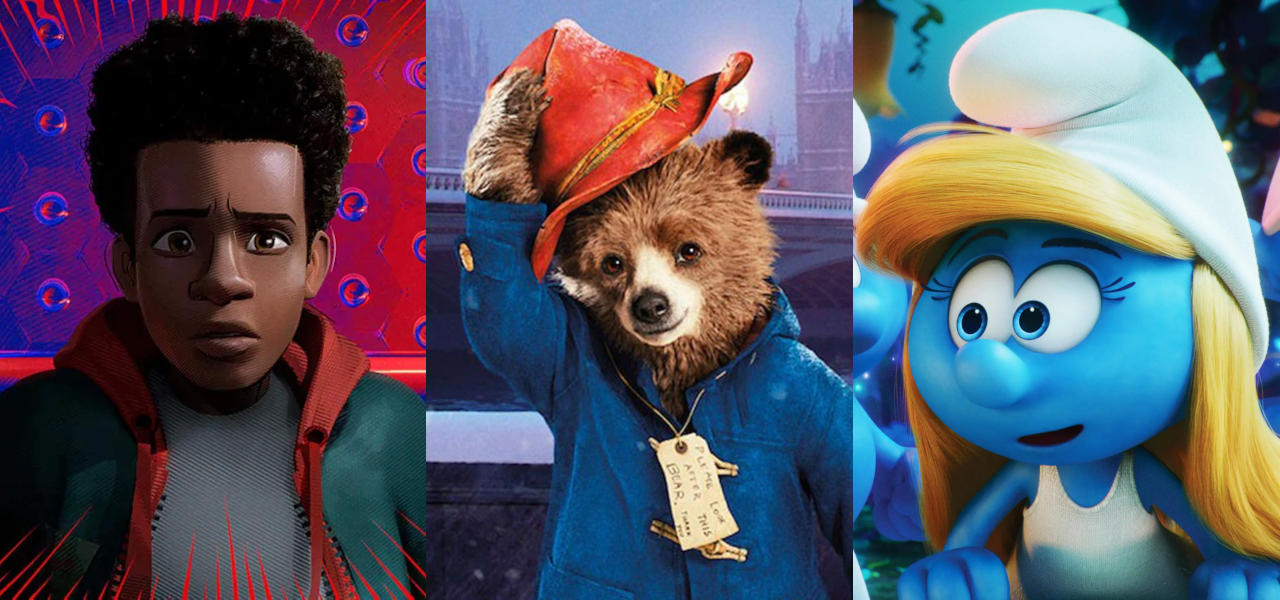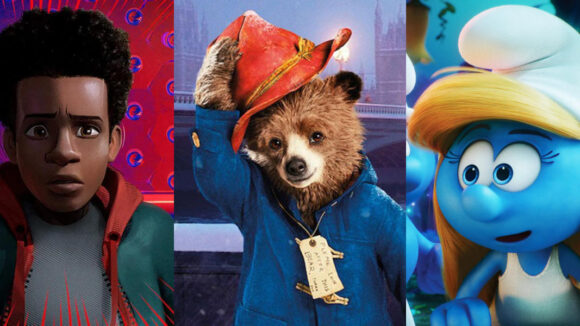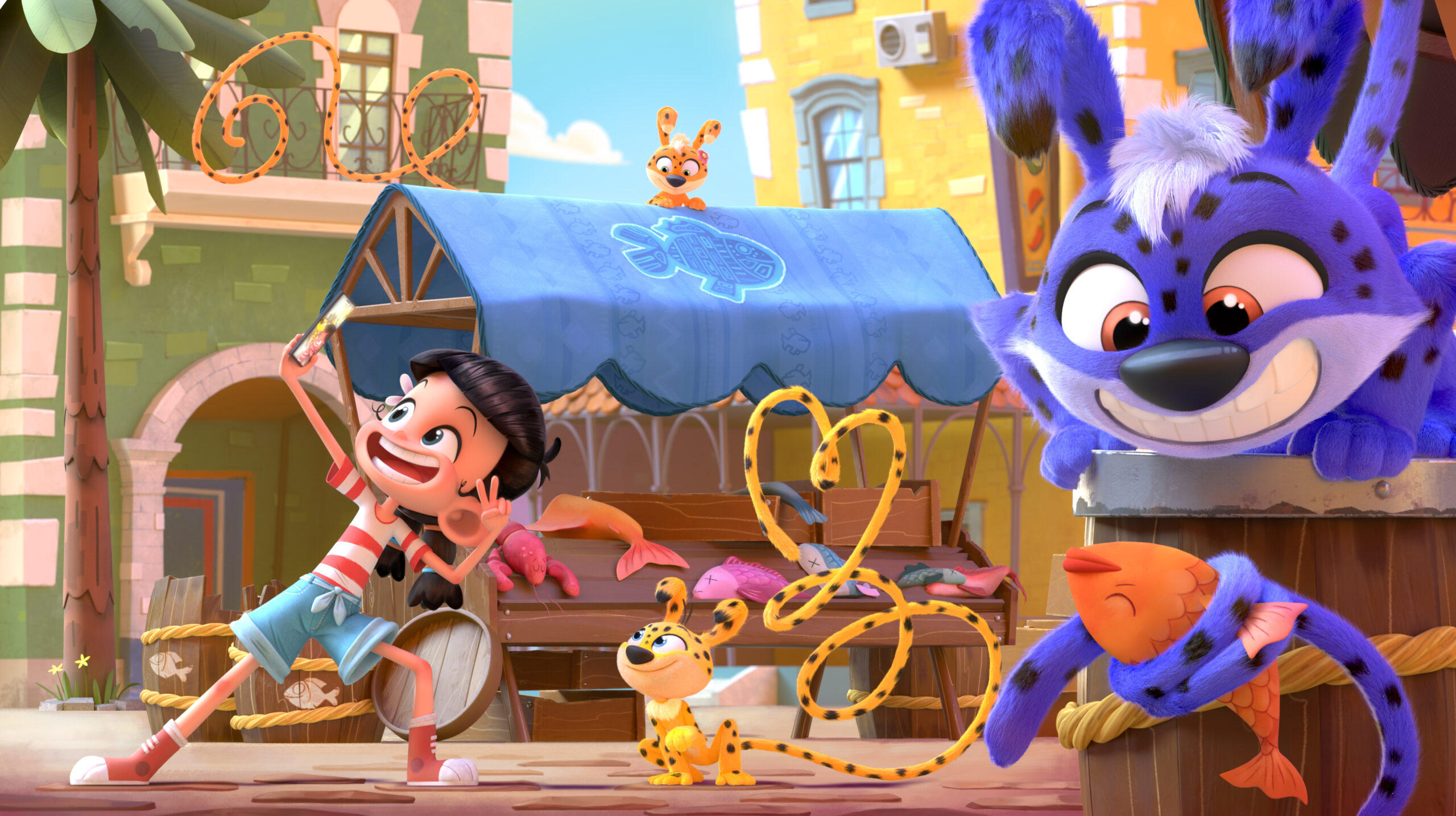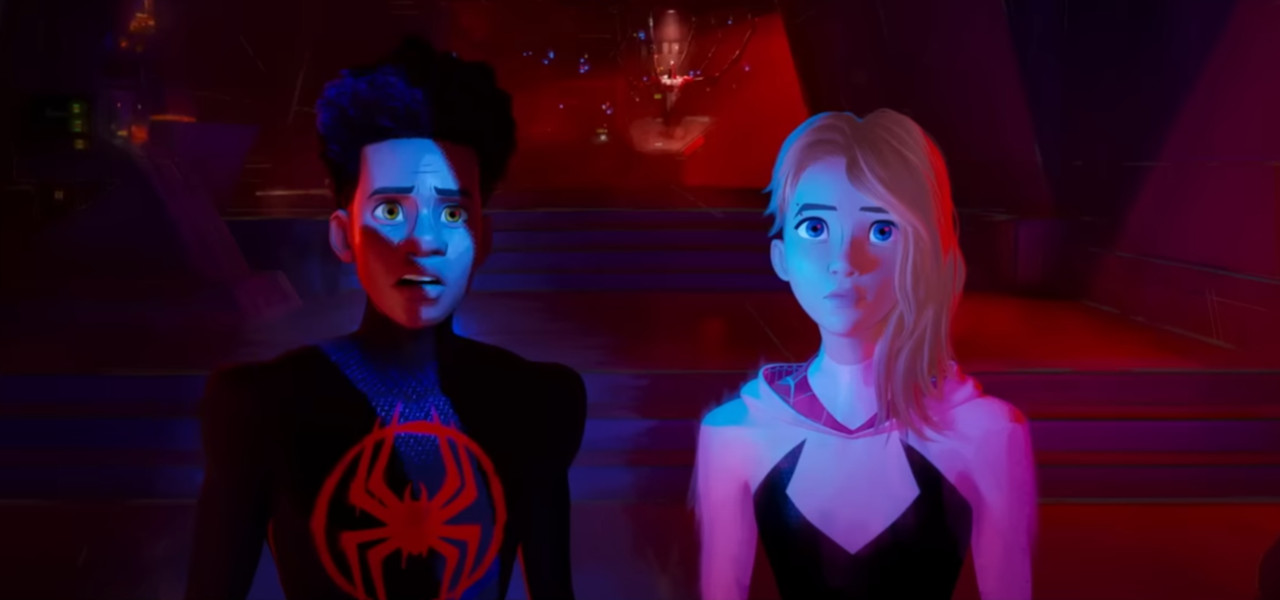

‘Spider-Man,’ ‘Paddington,’ ‘Smurfs’ Rightsholders Talk Adapting IP For Modern Audiences
We like to think of art as something that lasts forever, but stories can be perishable. Properties popular in the 1950s don’t always translate to modern-day standards of representation, storytelling, and relatability. Stories need to change over time, or they’ll simply stop being told.
Annecy’s panel on adapting famous IP brought this idea to the forefront by organizing a group of producers who hold the rights to decades-old IPs. Françoise Guyonnet of Studiocanal vp Americas business management, the rights holder for Paddington; Lila Hannou of Ellipse Animation, which adapts the popular French character Marsupilami; Katie Baron of Sony Pictures Animation, the rights holder to Spider-Man; and Nele De Wilde of IMPS, licensors of The Smurfs property, engaged in a discussion on how their classic IPs have survived into the modern day.
Paddington’s recent cinematic outings have gathered critical acclaim like a magnet and proved a smash at the box office. Studiocanal gained the full rights to the marmalade-loving Peruvian after their 2014 outing with the character. According to Studiocanal’s Guyonnet, “The security of a long-term relationship and a long-term strategy for our IP” appealed to the company. Being able to use such a famous IP can be future-proofing for a studio. Planning the release of multiple films over the course of a decade around a character with a built-in fan base provides some stability in an industry that can shift with the gentlest gusts of wind.

However, a built-in fan base is not a guarantee of success. Taking care of an IP’s original values while updating it for a modern audience is a tightrope that many have been unable to walk. Guyonnet found returning to Paddington’s base texts helpful. “We tried to emphasize the elements of the original story that remain modern,” she explained. “Paddington is from South America so the people around him are diverse and there are so many strong female characters.”
A South American setting was also adopted for the latest adaptation of Marsupilami. The characters’ comic book origins see them hail from the continent, but many subsequent adaptations felt Eurocentric, appealing more to the mainland European fanbase that stretches across France and Germany. Hannou, vp of creative development and strategy at Ellipse Animation, emphasized a desire for an “international perspective” when developing newer stories based around these characters. That shift helps the brand reach international audiences but allows the shows and films to speak more directly to minorities within the territories where the IP is most popular.

Peter Parker being the face of the Spider-Man franchise means making something like Into the Spider-Verse somewhat counter-productive from a business standpoint. However, Baron, vp of creative at Sony Pictures Animation, saw switching the protagonist to Miles Morales as something that “gives the story a purpose.” The character of Spider-Man was reinvented in the 2010s by Marvel’s Brian Michael Bendis in the comics. Miles Morales is an Afro-Latino teen, constantly under surveillance by his helicopter parents, adding a different dimension to the tribulations of Spider-Man-ing.
Sony’s animated Spider-Man was brought to the screen thanks to the efforts of Phil Lord and Chris Miller, who only agreed to sign on if Sony allowed Miles to be the protagonist. Another decision Sony had to make was whether the film should be animated at all. Spider-Man movies have a rich live-action box office history. Again, there was no real commercial reason to switch that up. For Baron, the primary aim of the Spider-Verse films was to “bring a comic book to life,” meaning animation was the natural solution.

Similarly to how Guyonnet looked back through the Paddington catalog to find diversity and modern themes, Baron spoke about returning to Stan Lee and Steve Ditko’s initial intentions when creating the character. The phrase, “Anyone can wear the mask,” is repeated throughout the film and its marketing, a deeply modern sentiment rooted within the core of the character. Few things are more Spider-Man than that.
Comic book origins are common among animated IPs, and The Smurfs is one such property. The franchise has been handled by many different studios that have often attempted to realize a more modern version of the characters. Sony Pictures had a crack in 2011, and in 2025 Paramount will take its turn with the characters. For De Wilde, chief commercial officer audiovisual and music at IMPS, the most glaring issue with The Smurfs was the dire lack of female representation in a world where 100 male characters live in a village with just one female, Smurfette. For their newest iterations, more female characters will be introduced.
De Wilde also explained that many who had worked on the franchise before assumed that the blue skin of The Smurfs allowed people of all races to project themselves onto the characters. However, an encounter with a Nigerian fan shifted her perspective as she woke up to The Smurfs’ Eurocentric hairstyles and clothing. Even if they aren’t physically white, their appearance has always been European-coded. Making changes to characters not fully owned by the studios is a gambit in and of itself. De Ville has bumped up against the estate that owns The Smurfs over seemingly innocuous details. For instance, a Smurf taking off their hat or sharing a house with another Smurf is strictly forbidden.
For all of these franchises, visual updates were vital to keeping the franchises alive. Paddington, The Smurfs, and Masupilami went for clean, realistic but cute cg models which modern audiences are used to seeing at this point. Many of those franchises skew towards younger children, where the risk of alienation through a subversive art style is not taken.
Spider-Verse did not bother with that fear. Redefining what a Western animated film can look like was at the very basis of what Lord, Miller, and company wanted to achieve with the first film, and that ambition is pushed to new heights in the second. Spider-Man has a strong enough standing in contemporary pop culture and a stable enough base to be an innovator in animation.
While audiences often insist that they want more innovation like that which can be found in Spider-Verse, many classic IPs are in the process of rebuilding their fanbases with a new generation of viewers and such risks cannot be made by stakesholders. Perhaps Spider-Verse and other risk-taking franchises can act as disruptors to this norm.
Sitting in the audience of this Annecy discussion of IP, it’s easy to wonder what a panel like this will look like a few years from now. Will the larger industry catch up to the experimentation present in films like Across the Spider-Verse, Puss in Boots: The Last Wish, or Netflix’s upcoming film Nimona, which premiered in Annecy last night? Perhaps future IP adaptations will be chasing a different kind of audience with more adventurous expectations.
Pictured at top: Spider-Man: Into the Spider-Verse, Paddington, Smurfs: The Lost Village

.png)